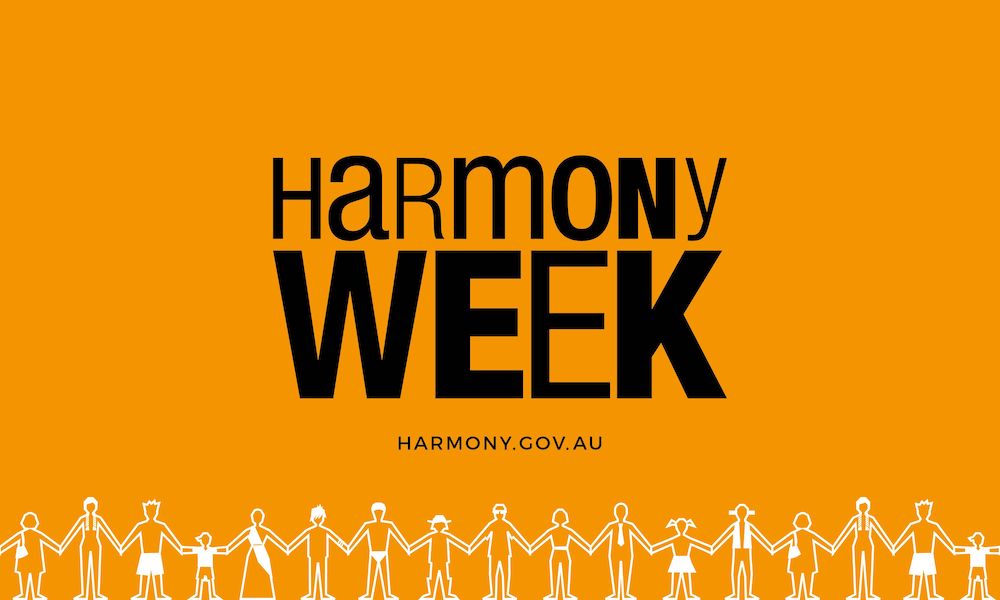Embracing diversity in Harmony Week
Published on Tuesday, 17 March 2020
Last updated on Thursday, 12 March 2020

Get ready to wrap yourself – and the classroom – in shades of orange as Harmony Week headlines celebrations across the country. This week-long festival runs from 15-21 March, culminating in Harmony Day on Saturday 21 March, and is an opportunity to recognise the wide range of people and cultures that make up Australia.
Harmony week is a wonderful time for early childhood services to celebrate and raise children’s awareness and appreciation of the diverse cultures around them. The orange icing on top of the cake is Harmony Day, which coincides with the United Nations International Day for the Elimination of Racial Discrimination.
Orange is the signature colour of Harmony Week, because it relates to social communication, aids in the development of new ideas, and frees the spirit of limitations, giving us the freedom to be ourselves. According to colour psychology orange encourages both self-respect and respect for others.
Harmony Day is an annual event that encourages people to share the message that ‘everyone belongs’. Communities across Australia are invited to celebrate it in a way that is meaningful to them, highlighting who we are as a nation, our multicultural roots and to promote a more inclusive environment.
Since beginning in 1999, more than 77,000 Harmony Week events have been held across Australia. It’s a showcase of different cultures and appreciation of differences through a seven-day festival of food, music, art and language across the country.
Australia’s multicultural makeup
- Nearly half (49 per cent) of Australians were born overseas or have at least one parent who was
- More than 70 Indigenous languages are spoken in Australia.
- We identify with more than 300 ancestries
- Since 1945, more than 7.5 million people have migrated to Australia
- Apart from English, the most common languages spoken in Australia are Mandarin, Arabic, Cantonese, Vietnamese, Italian, Greek, Tagalog/Filipino, Hindi, Spanish and Punjabi
Ideas for celebrating Harmony Week
Celebrating diversity and bringing multicultural activities into the classroom allows children to learn about different cultures and encourages respect and inclusiveness.
Here are some ideas to get you started:
- Indigenous welcome: If possible, have an elder from your local Indigenous community come to your service to perform a ‘Welcome to Country’ ceremony and talk to the children.
- Australian stories: Ask parents if they would like to visit the classroom to talk about their culture, backgrounds and experiences – sharing their unique stories with items that represent their history.
- Dress up: Wear the colour orange or ask children to wear the national costume they identify with, or even just part of it, such as a hat.
- Plan a cultural food picnic: Nothing says celebration and brings people together more than delicious food. Ask parents to provide a plate that promotes their cultural dish. Request a short explanation about the dish, its provenance and what it means to them. You could also feature an orange plate with everything edible that’s orange.
- Music festival: Explore culture and harmony with rhythms and tunes from around the world. Organise a collection of music such as Indigenous, Blues, Latino, Scottish, traditional Japanese and invite the children to create their own moves as they listen. Ask the children to describe what it sounds like and have fun with the different tempos and sounds. They could even paint the sounds they hear.
- Read stories: Multicultural books are important because they can provide windows into other cultures and introduce children to new ideas while helping those from under-represented groups see themselves reflected in literature. Check out these SBS recommendations for six picture books celebrating diversity.
- Play games from around the world: This is a great way to teach children the influence of culture on the games we play. Here are five suggestions from InCultureParent for fun games from around the world to get started.
- Language skills: Start each day of Harmony Week by learning ‘hello’, ‘how are you’ and ‘I am well’ in a new language. If any children are fluent in a second language they can assist.
- Create passports: Help children create and colour their own passports at the beginning of the week. This will record their journey to learn about different cultures. Every visit to another culture via activities leads to a mark in their passport, capturing their travels.
- Arts and crafts: Let the children flex their creative abilities to make something that symbolises the different cultures of your local community. Try ‘Diwali Rangoli Art from India’ and let the kids colour it with bright chalk colours. Or let them splash some colour about as they create ‘paper plate African necklaces’. Let them go dotty with ‘Australian Aboriginal dot painting,’ which could be done alongside a reading of an Indigenous story with traditional imagery for inspiration and learning.
For more information visit the Harmony Week website. Need some more ideas? This website features a fantastic list of early childhood lesson plans, ideas and activities to keep children busy all day every day of Harmony Week.
Related Articles

How to celebrate indigenous languages in your centre
How languages link us to our individual identity, traditional culture, memory and the importance of Indigenous languages in your service.

New resource for boosting inclusion in early childhood services
Online resources to help educators gain more confidence in building inclusive environments.

Celebrating diverse families
Celebrating the diversity of family structurs among children in early childhood services.

